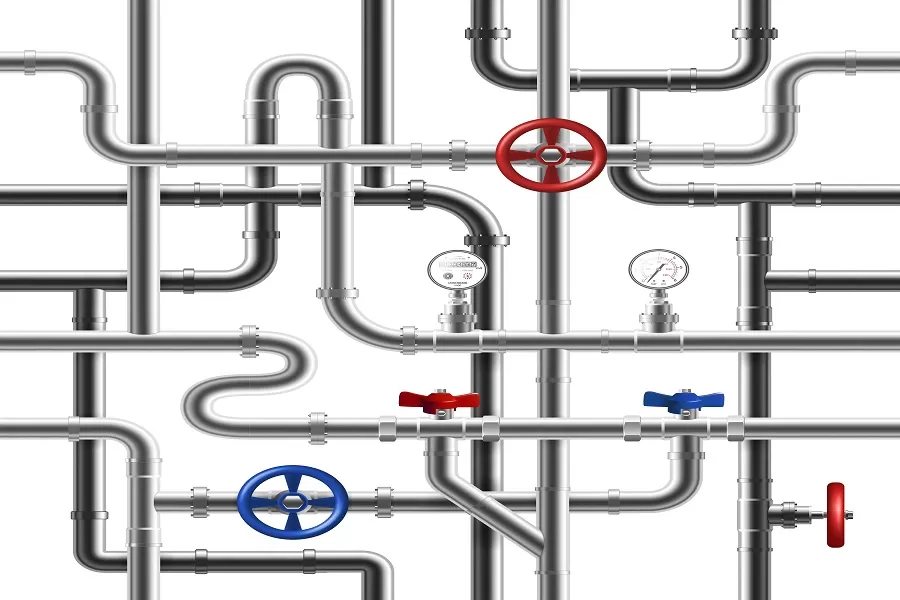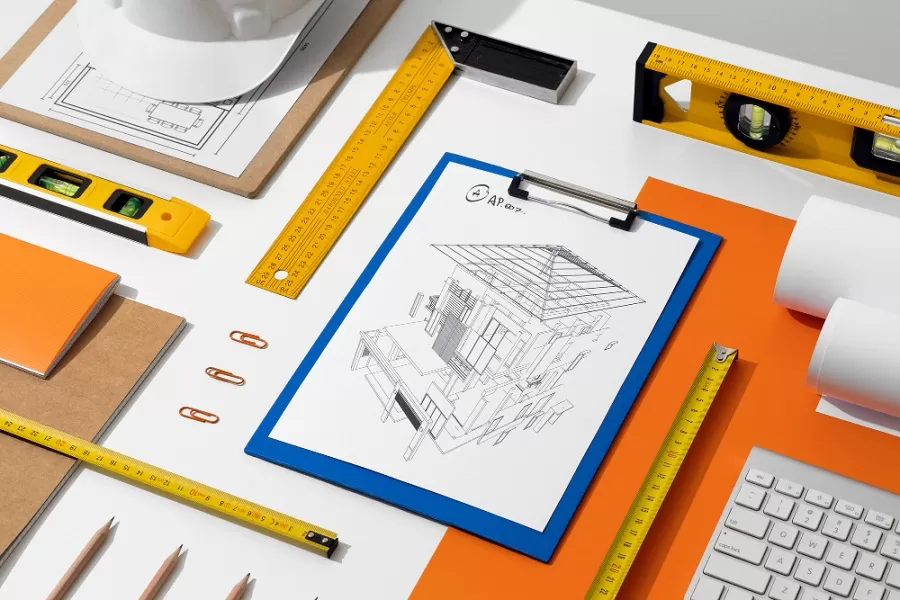Product designing is a tedious and time-consuming task that requires hundreds of man-hours. From conceptualization to prototyping, each step demands precision, accuracy, and creativity. Thanks to modern technology, today there are numerous mechanical design technologies like 3D modeling and rendering that have streamlined the product designing workflow. These technologies use advanced CAD design software to help mechanical engineers create detailed 2D drawings and lifelike 3D models for better design understanding and product prototyping. However, the impact of 3D modeling and rendering in mechanical product design goes far beyond mere visualization and prototyping. These technologies play a crucial role in improving design accuracy, reducing development time, enhancing collaboration, and ultimately delivering innovative and high-quality products to the market.
Let’s see what these two technologies are and how they are transforming our product design experience.
What is 3D Modeling?
3D modeling is the process of creating detailed three-dimensional (3D) digital representations of the object or product using specialized CAD design software like SolidWorks, Autodesk Inventor, Rhino, 3ds Max, and SketchUp. This mechanical CAD drafting service allows product designers, manufacturers, fabricators, and process plant engineers to visualize concepts, create prototypes, and simulate real-world scenarios before the actual production of physical objects. This way, it
- Facilitates better product planning and designing
- Limits or eliminates major design conflicts
- Accurately displays the final product before manufacturing
- Saves time, costs as well as resources
Thanks to 3D CAD, product design engineers can create precise product designs that are accurate to the tiniest details. The resulting digital image contains a myriad of information that’s more than just shape and dimension. It includes information regarding materials, colors, textures, the inner workings of mechanical parts, and results from simulations.
This level of detail and simulation capability helps engineers to identify and rectify potential issues early on, leading to more robust and efficient product development processes.
What is 3D Rendering?
3D rendering, also known as 3D visualization, is a specialized form of 3D modeling that has extended the capabilities of modern CAD software from simply creating digital three-dimensional plans to displaying them in lifelike images. It is the process of generating photorealistic (or non-photorealistic) images from a 3D model using specialized software and rendering techniques. For 3D rendering, CAD designers and drafters take the 3D model of the product and apply lighting, textures, materials, and other visual effects to produce a realistic or stylized visual representation of the object.
In simpler terms, 3D rendering is like taking a 2D Drawing and turning it into a Three-Dimensional (3D) image or 3D Animation that looks like a real-world object or environment. This technique is used in various industries such as architecture, interior design, product design, film and animation, gaming, and advertising to create realistic visuals of objects or scenes for presenting ideas, concepts, or products to clients or audiences.
Difference Between 3D Modeling and 3D Rendering
| 3D Modeling | 3D Rendering | |
| Definition | Process of creating a digital 3D representation | Process of generating realistic 2D images or videos |
| Purpose | Create detailed 3D objects or scenes for Engineers | Produce photorealistic or stylized visualizations for anyone |
| Software/ Tools | SolidWorks, AutoCAD, Blender, Autodesk Maya, Rhino3D, SketchUp | Autodesk 3ds Max, V-Ray, Blender, 3Delight, and RenderMan |
| Output | Comprehensive digital 3D models | Photorealistic or non-photorealistic 2D images/videos |
| Application | Used in product design, animation, architecture | Used in marketing, film, gaming, visual effects |
| Time Consumption | Can be time-consuming depending on product complexity | Time-consuming due to rendering calculations, camera angles, lighting etc. |
| Visualization | Provides 3D visual representation of the design for product development | Produces realistic or stylized visual representation for demo and presentations |
The Benefits of 3D Modeling and Rendering in Product Design
CAD modeling and 3D rendering have brought a new wave of creativity and innovation in the mechanical product design industry. They have significantly enhanced the design process and have revolutionized the way engineers conceptualize, develop, and showcase mechanical products. Below are the key benefits of mechanical CAD design services and 3D rendering in product design:
1. Enhanced Design Visualization
Gone are the days of relying solely on 2D drawings to convey complex mechanical designs. CAD modeling allows engineers to create highly detailed virtual models that provide a comprehensive view of every component, assembly, and system. This enhanced visualization capability facilitates better design evaluation, refinement, and decision-making, ultimately leading to optimized product designs.
2. Efficient Prototyping
Product prototyping phase is a critical stage in mechanical engineering. Numerous design iterations need to be tested and validated before moving the product into production. This is a repetitive process that is both time-consuming and costly.
3D modeling saves the hassle by creating digital prototypes and product animations that can be tried and tested virtually before taking the product to production. This reduces errors, accelerates design iterations, and significantly saves time and resources during the prototyping process.
3. Exploded Views
Various CAD modeling software like SolidWorks, AutoCAD, Fusion 360, and Inventor allow engineers to create exploded views and assembly animations of their inventions. These features allow engineers to gain a detailed understanding of how individual components fit together and interact to form the final product.
Exploded views are especially useful for creating assembly instructions, maintenance guides, and troubleshooting procedures. They help users visualize the internal structure of the product, the relationships between components, and the sequence of assembly steps. This visual representation aids in clearer communication and enhances the overall user experience.
4. Seamless Collaboration
In today’s interconnected world, collaboration is key to driving innovation and achieving project success. 3D modeling and rendering services facilitate seamless collaboration among team members, irrespective of geographical location. Engineers can easily share 3D models, collaborate in real-time, gather valuable feedback, and make informed decisions collectively. This collaborative approach results in more efficient design iterations and superior end products.
5. Design Optimization
Optimizing mechanical designs for performance, functionality, and manufacturability is a continuous endeavor for engineers. 3D modeling tools come equipped with advanced analysis capabilities, allowing engineers to conduct simulations, stress tests, and feasibility studies with ease. By identifying potential issues early in the design phase, engineers can make data-driven decisions that can enhance overall product performance.
6. Compelling Presentations
Effective communication is paramount when conveying design concepts and ideas to stakeholders, clients, and investors. 3D rendering services take 3D models to the next level by creating 360-degree interactive views of products for photorealistic visualizations, animations, and presentations. These immersive visuals not only captivate audiences but also provide a clear understanding of the product’s features, functionality, and aesthetics, fostering better engagement and buy-in.
It’s Time to Make the Most of Technology!
CAD drafting, modeling, and 3D rendering have transformed the way mechanical designs are created and products are built. They provide the critical speed element that mechanical engineers require to optimize their workflows, reduce design iterations, and bring products to market faster than ever before. So, whether you want to explore new design concepts, simulate product performance, or present realistic visualizations to stakeholders and clients, it’s time to embrace technology and elevate your mechanical engineering projects.
Partner with Enginerio and achieve your design goals efficiently and effectively. We hold proven expertise and international project experience in CAD drafting, 3D modeling, and rendering services and can help you make the most of technology. Contact us for a free quote or to know more about our mechanical engineering services.





